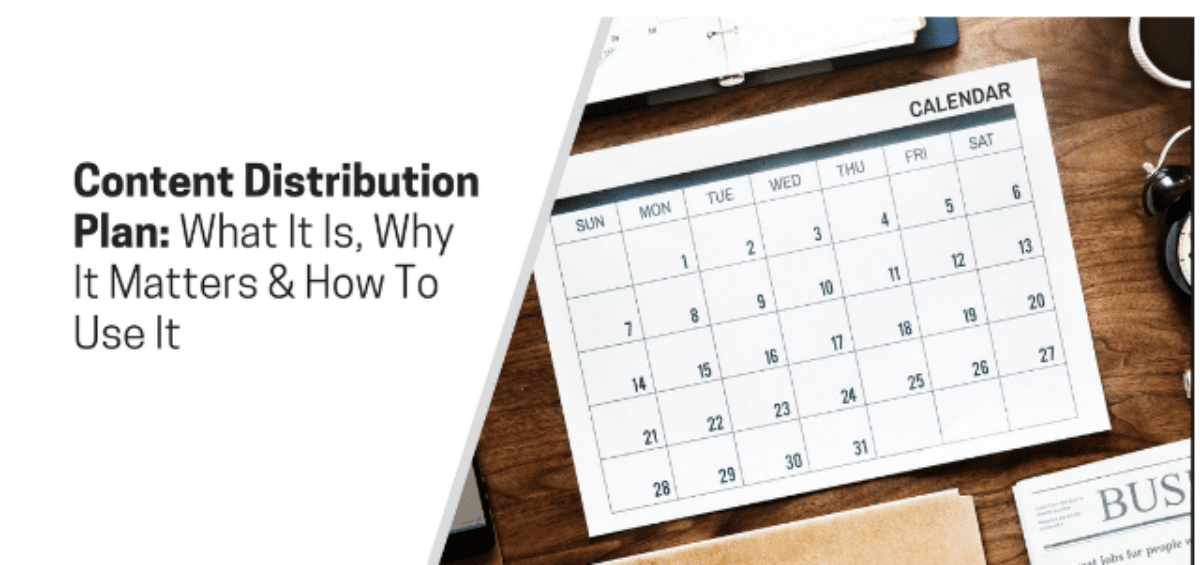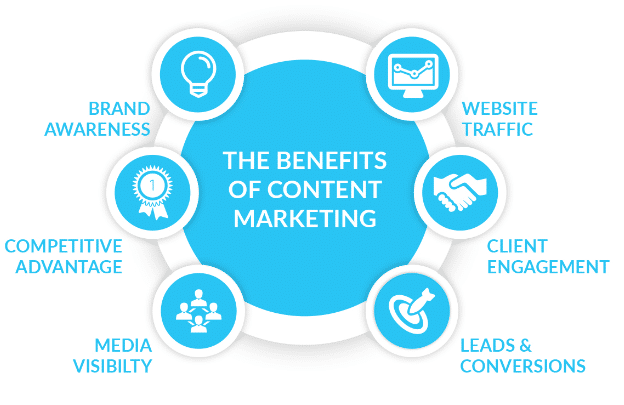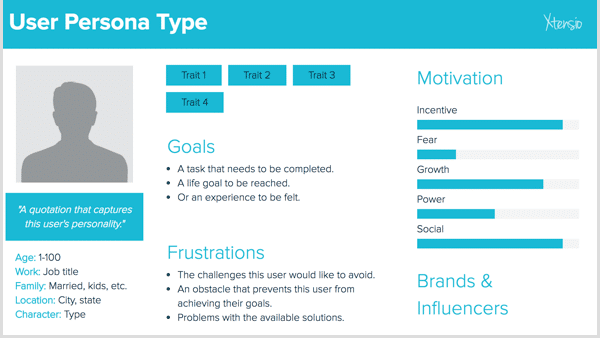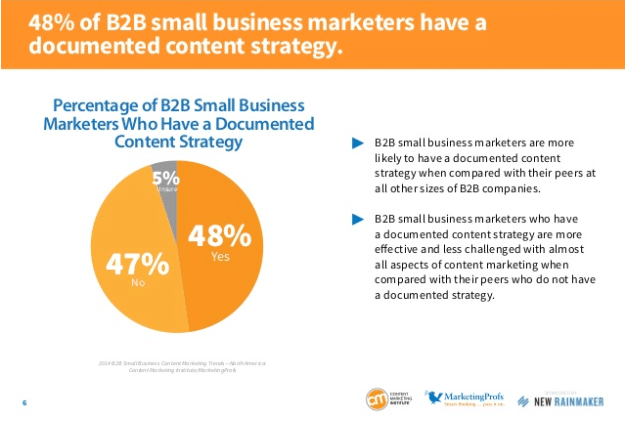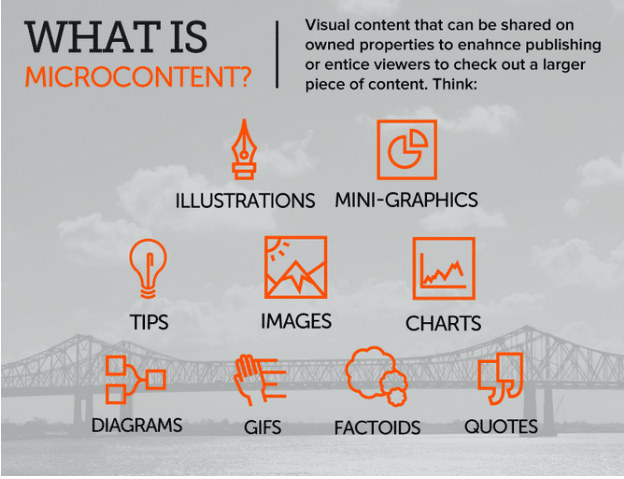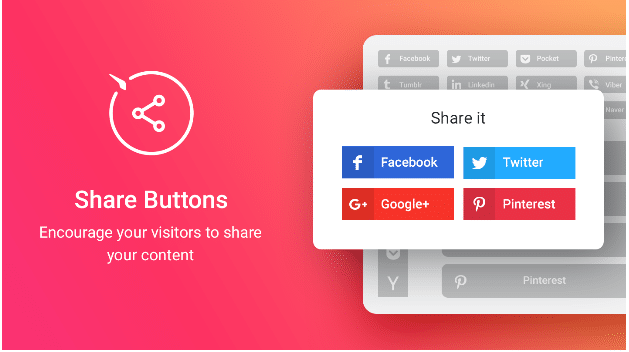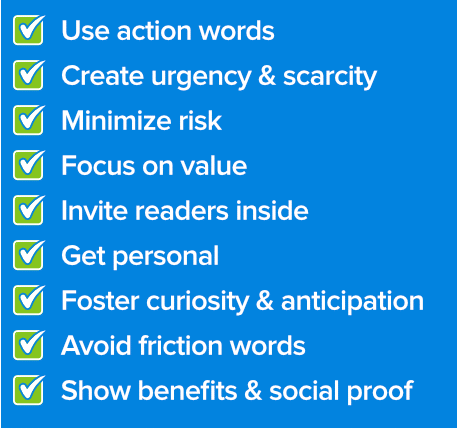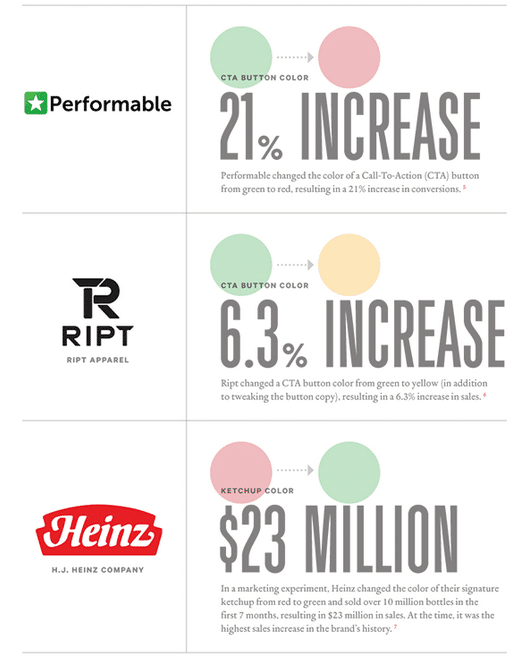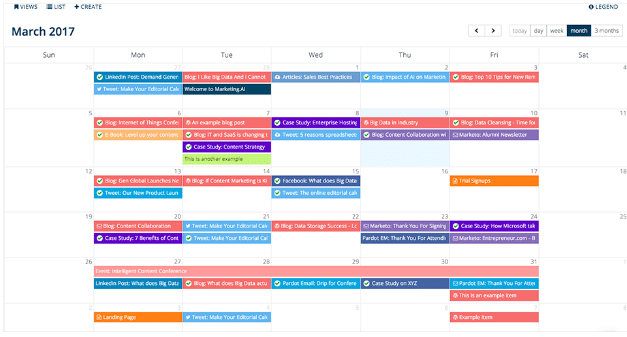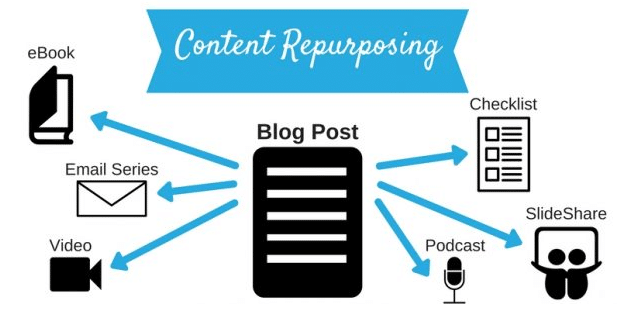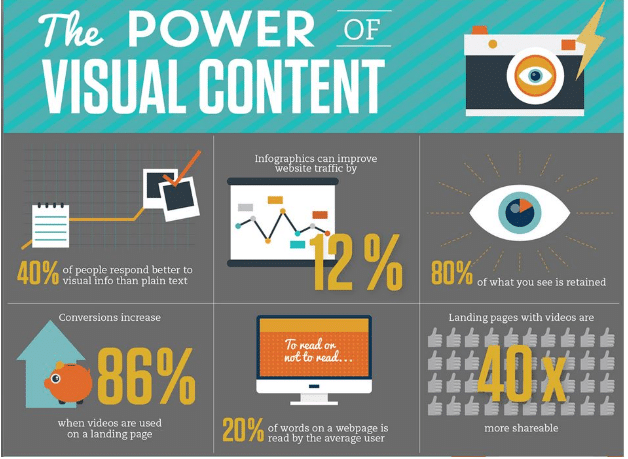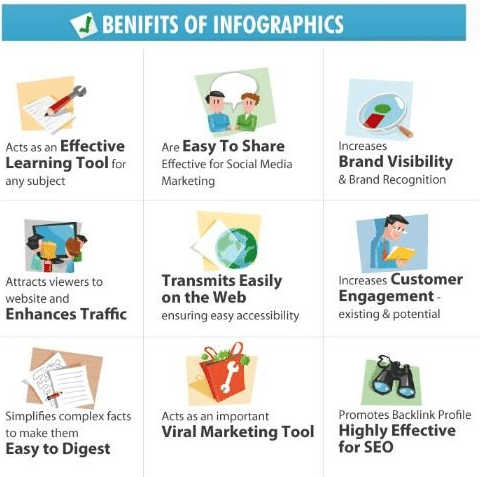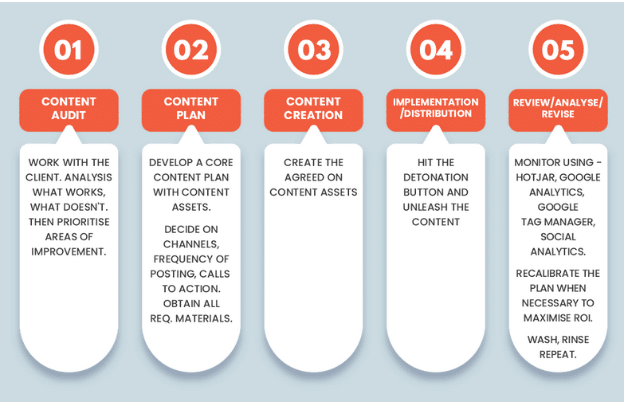Content marketing is a key component to business continuity. But even the most creative and compelling content must reach the right audience in the right way at the right time. This is why the success and ROI of your content depend on your content distribution strategy. This strategy will serve as one of the most effective ways to achieve your content marketing goals.
What Is a Content Distribution Strategy?
As the phrase implies, a content distribution strategy is a set of methods by which content is distributed to achieve certain goals. Content distribution is just one of the many aspects of content marketing, and it involves getting content to as many segments of a target audience as possible. But more than just striving for maximum reach and coverage, a content distribution strategy aims to provide content that is valuable, relevant and interesting to the intended audience.
A good content distribution strategy provides audiences with content they NEED. It also helps establish relationships between your brand and your customers. Ultimately, it encourages readers or viewers to take a desired course of action. This usually comes in the form of a call to action (CTA).
What Are the Benefits of a Content Distribution Strategy?
Although content distribution is often seen as a subset of content marketing, it requires a separate set of methods. Content distribution aims to provide valuable and relevant content to a specific audience, with the end goal of driving profitable or beneficial action. As we just pointed out, content distribution seeks to convince customers to make a purchase or take a course of action that is beneficial to your company.
Having a strategic approach to content distribution dramatically increases a company’s potential to reach a wider audience. More importantly, a well-planned content distribution strategy ensures the content reaches the desired audience at the right time and in a way that appeals to them on a personal level. It also augments the availability and accessibility of content via channels that the intended audience typically uses.
Different audiences tend to have different online habits. Some may choose to access content solely from blogs and web pages while others may use social media almost exclusively. Some audiences may visit only certain social media channels and largely ignore others.
Browsing habits and preferences tend to vary considerably between different social media channels as well. While some channels may encourage frequent and direct interaction between content providers and audiences, others are better suited for casual browsing and sharing.
An effective content distribution strategy considers not only the type of audience that the provider is hoping to reach but also where and how they choose to access the content. With a well-defined content distribution strategy in place, it becomes much easier to develop methods that cater to the target audience’s needs.
Adopting a strategic approach to content distribution also ensures that all potentially useful channels are utilized to the fullest. Many content marketers tend to focus solely on channels that are popular at the moment, such as social media, and neglect other equally beneficial channels like blogs and email. By developing a strategy that includes underutilized channels, companies have a much better chance of achieving their content marketing goals.
Another way a content distribution strategy enhances content marketing efforts is by helping identify key performance indicators (KPIs) that provide useful data and information.
With content marketing, it’s easy to focus only on KPIs that seem relevant. But in all actuality, many of these KPIs aren’t significant in gauging the effectiveness of a content marketing campaign. With video marketing content, for example, many providers focus mainly on the number of views they get. However, they fail to consider how many times the video is shared, which usually serves as a critical KPI for marketing purposes. A content distribution strategy helps ensure that you keep track of the KPIs that provide the most useful data for your content marketing efforts.
Ultimately, content distribution is about ensuring the availability of valuable content that spurs audiences into action. Without a proper strategy, companies run the risk of flying blindly without realizing which methods are most beneficial and which methods they need to modify or discard. By implementing a solid content distribution strategy, you can continue to provide content that will always contribute toward your overall marketing goals.
An Effective Content Distribution Strategy Starts With a Buyer Persona
The most successful content distribution strategies involve identifying buyer personas, preferably at the start of the strategy formulation process. Buyer personas are essentially composite sketches of a specific segment of the target audience.
Developing a buyer persona is an essential step toward developing content that appeals to your intended audience. It leads to a deeper and more meaningful understanding of your audience, what makes them tick, and what drives them to follow a CTA. Ultimately, it shows you what leads them to becoming loyal, returning customers.
Beyond merely developing a buyer persona, it is also important to determine how audiences utilize and access content. The most successful content marketers not only manage to successfully identify their audiences, but also understand audience behavior throughout the entire journey toward conversion. This understanding makes it possible to develop a content distribution strategy that guides and encourages the customer toward the ultimate goal of taking action.
Buyer personas help content marketers define several essential components of their overall strategy, such as which types of content to create, which tone, delivery, and style to adopt, and which topics will contribute to achieving marketing goals. Buyer personas also help content marketers decide who to involve in a marketing campaign.
Developing even a single buyer persona will prove helpful for content marketing purposes. But the best results are usually obtained by creating three to five different personas. Having multiple personas will give you enough scope to cover most of your audience while still allowing you to focus your efforts on specific segments. Trying to market your content to more than five individual personas will dilute the effectiveness of your campaign and may prove costly to implement as well. Imagine creating a marketing campaign and then having to tailor it to eight different audiences. It’s much more time- and cost-efficient when you’re tailoring the campaign to only three to five audiences.
Buyer personas aren’t carved in stone. Like the people they are based upon, the needs, preferences, and habits of these buyer profiles will change over time. Although it is beneficial to maintain consistency with your message, don’t neglect the importance of periodically refreshing and modifying the personas that you create.
How to Determine Your Content Marketing Needs
Not all content marketing needs are the same. You will have to tailor your content marketing approach to your business, your audience, and your marketing goals.
It makes sense to define your marketing needs by first identifying the primary recipient of your content: your audience. To do this, you should ask yourself two questions: “Who is the target audience?” and “How many individual segments are being targeted?” Answering these questions will enable you to determine the type of content you need to develop.
You should also determine the purpose your content will serve your audience. Will it provide the solution to a problem or answer a specific question? Do you want to educate or inform your audience, or offer a product or service? Figuring out the purpose your content serves will help you create more relevant content and deliver it more effectively.
Spend some time figuring out what makes you unique in comparison to all the other content providers in your niche. Unless you serve a particular, narrowly-defined niche, there are probably already numerous competitors providing products and services like yours. This is why you should identify unique traits that set you apart from your competitors; it’s these traits that you’ll want to highlight in your content.
The factors mentioned above – your target audience, the purpose of your content, and your unique qualities – will help you determine the content formats and channels to use when creating and delivering content. These factors will help you determine whether you need to develop more short-form content, create more videos or infographics, or put more focus into your blog or social media channels.
It is especially important to consider the channels where you will publish your content. Remember that different channels often require different approaches, and even different types of content, to cater to the needs and preferences of the audiences that populate them. Identifying possible channels will help you determine your specific needs in terms of content generation and approach.
Spend some time figuring out how you will handle content creation and eventual publication. Are you going to create most of the content yourself or will you rely mainly on content produced by other providers? It may seem like a somewhat insignificant concern, but the answer will help you figure out how much time and resources you will need to devote to creating content and publishing it.
You may think that creating valuable content is an easy task, but ask any copywriter about the time invested into creating even a 500-word blog post and you’ll be sure to change your way of thinking. Take this article that you’re reading right now. It takes about four to five hours to create, and that doesn’t include the time invested in researching, sourcing images, and uploading the content to our website. Ultimately, you will likely need a team of writers to lean on to ensure that you have fresh, relevant content on a regular basis to provide to your audience.
Don’t forget that your content marketing plan should also include different forms of content. Did you know it can take up to six weeks or longer to create an effective infographic? This is yet again another reason you need to carefully plan your resources to ensure you have the right ones in place to meet all of your content creation and distribution needs.
Does a Content Distribution Strategy Need Microcontent?
Microcontent has become something of a buzzword over the past several years, and for good reason. The changing composition and preferences of market audiences have necessitated a change in the way brands create and deliver content. Microcontent is only one of the more significant results of these changes, and it has had a noticeable impact in shaping content marketing and distribution.
As the name implies, microcontent is the short-form alternative to the lengthy and detailed content that has traditionally dominated the content marketing sphere. It can take on many forms, including text, infographics, videos, social media, blog posts and more. Microcontent is relatively inexpensive and easy to implement, and is a potentially valuable addition to any content distribution strategy.
What explains the popularity of microcontent, and why is it so beneficial from a content distribution standpoint? The answers to these questions lie in the changing preferences of market audiences over the past few years.
The advent of social media has given rise to audiences accustomed to getting the information they need quickly and in an easily digestible form. In any given niche, the target audiences are comprised in large part of people who don’t have the time or inclination for long and detailed content that requires more focused reading. Microcontent addresses the needs of these audiences by providing content that is no less relevant and useful, but that is much easier to digest.
Adding microcontent into your content distribution strategy enables you to cater to the needs of mobile users, which is one of the fastest growing marketing segments today. Smaller screen sizes and the way that mobile devices lend themselves to accessing quick bites of information “on the go” highlight the importance of microcontent.
Content Distribution Strategy Tips for Your Blog
You probably already use a blog for content marketing purposes. As useful as your blog may be, there are ways you can transform it into a more potent content distribution tool.
Blogs serve many purposes. They can inform and educate your audience, provide your company with a more human and relatable “face,” and serve as a powerful platform for publicizing your brand or your products and services. And, of course, they are a useful outlet for distributing content. Here’s a look at a few ways to maximize the content distribution potential of your blog.
Add Social Sharing Buttons
Make it easy to share your content on social media. There is no reason why your blog should exist in a vacuum. The simple act of adding social media share buttons increases your chances of having your blog content shared, which greatly expands your reach.
Some brands include a long list of social sharing buttons, but this can easily overwhelm your audience. Ideally, you will identify the top five social media networks that your readers utilize and provide social sharing buttons to those sites. This keeps your blog posts looking neat and organized while still providing readers with the option to easily share your content.
Use Microcontent
Provide plenty of short and easy to share bits of content. Quotes are useful for this purpose, particularly if they have Tweet buttons conveniently located nearby.
Perform Keyword Optimization
Don’t neglect the importance of keyword optimization. Effective keyword implementation can significantly enhance the visibility of your blog on major search engines, which increases your chances of attracting higher quality organic traffic. For maximum SEO value, you should incorporate keywords into the names of image files, alt tags, headlines, and URLs.
Use Compelling CTAs
Have a compelling CTA. Whether or not you want your blog’s readers to do something that will profit you directly, such as purchasing your product, adding a CTA is always a good idea. Even a link to another blog entry will keep your readers engaged while moving them along the conversion path.
You will benefit from putting some effort into making your CTAs as compelling and convincing as possible. If your CTA doesn’t generate the desired response, experiment with different wordings and placements. Simply changing the color of a CTA can increase conversions.
Add a Subscribe Button
Make it easy for readers to stay updated on your latest content. To do this, you can use an email subscribe button, which opens up another avenue for content distribution.
Properly Use Links and Buttons
Don’t assume that your links will work correctly. Always check to make sure that they direct readers where you want them to go. Don’t be afraid to move things around for maximum visibility and access either. Positioning is a lot more important than you might think, and it could mean the difference between a link that people frequently click on and one that they ignore.
Schedule Your Posts
Figure out the best time to publish your content. The optimal time varies and depends on your audience, but a study conducted by the Science of Social Timing shows that most readers access their favorite blogs in the morning around 11 a.m. EST. Content posted on Mondays and Thursdays at 9:30 a.m. also has a higher likelihood of being read.
Content Distribution Strategy Tips for Your Social Media Content
In many ways, content distribution for social media is an entirely different discipline unto itself. In other ways, it shares many similarities with content distribution in general, especially as it applies to distribution on other channels. Here are some ideas for how you can more effectively use social media for content distribution.
Decide on a message and use the appropriate tools to communicate it. Social media can be useful for attracting new users, promoting new brands, and launching new campaigns.
Regardless of what you leverage it for, focusing on a specific message is the key to effective social media marketing. Always channel your efforts to get your content in front of your intended audience in the most effective way possible. This increases the benefits that you derive from social media-focused content distribution.
As with most other aspects of content distribution, knowing your audience is essential for effective social media marketing. Thorough research is necessary to determine where your audience spends a significant portion of their social media time and what drives them to perform specific actions. Familiarity with your audience also enables you to focus your efforts on beneficial channels rather than waste time on those that your potential customers never use. This is where your buyer persona is going to play an important role.
Strive to create a more personalized social media presence. It’s easy enough to post content on your social media channels, whether it is original content that you created yourself or something that you share from other providers. But the most impactful types of content tend to be those that forge emotional connections with audiences. A genuine and engaging social media presence will do a lot more for your brand than the most calculated marketing campaign. If you can be someone that your audience can latch on to and relate with, they will be much more receptive to your message. Always, always, always solve a problem for your audience!
Don’t underestimate the power of reposting. Whether it’s your own content or content generated by others, reposted content has tremendous potential to reach more people than just the original audience.
Don’t hesitate to repurpose existing content either, even content that you previously used on the same social media channel. One of the best things about content marketing is that you can recycle and repackage content in many different ways without diluting the core message. Some of the most informative sections of an e-book can be distilled into an infographic or broken down into a step-by-step tutorial video. In fact, repurposing content is a great way to customize it and make it more palatable for the social media crowd.
Why Your Content Distribution Strategy Needs Visuals
For better or worse, the present-day marketing arena is a visually-driven one in which people prefer visual content to text content. Photos, videos, infographics, illustrations, diagrams and charts are all visual forms that your content can take. They can be the most powerful and compelling tools in your content distribution arsenal.
Technological innovations such as faster internet connections and more powerful and more sophisticated mobile devices are partly responsible for the popularity of visual content. Your audience probably consists mostly of people that frequently access visual content on social media and video sharing channels. Adopting a content distribution strategy in which visuals play a significant role will always work out to your advantage.
As with personalized content, visuals help forge an emotional connection between you – the content provider – and the audience. Many people find it much easier to relate to a funny, interesting or otherwise engaging video than to a wall of text. Once you secure that connection, your message has a much better chance of hitting its mark and getting your audience to follow your CTA.
Visual content also tends to be a much more effective tool for enhancing and clarifying a message. Visuals give your audience something to latch on to, making the content more memorable than a few lines of copy or a catchy slogan. The fact that videos tend to be shared and viewed repeatedly further increases their potential for brand recall and message retention.
Just like microcontent, visual content appeals to the preferences and online habits of audiences with shorter attention spans. You are much more likely to attract and hold the attention of an audience accustomed to mobile access and social media with an eye-catching graphic or video than you are with traditional text-based content.
Finally, due to its high engagement potential, visual content has tremendous power to generate and drive leads. By maintaining consistency among several types of visual content across multiple channels, you will expand the reach of your brand considerably.
Working With a Team of Content Marketing Experts
No doubt about it, there’s a lot that goes into creating an effective content distribution strategy. From developing a buyer persona to creating intriguing visuals that move your audience through the sales funnel, your content distribution strategy is a never-ending cycle. As your audience changes, so must your strategy.
This is why you need a team of content experts in your corner to study your audience and help you create a strategy that increases conversions. Contact IGW today to learn more about putting an industry-leading content marketing team in your corner.

